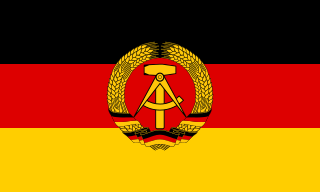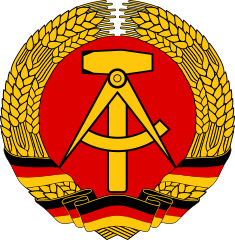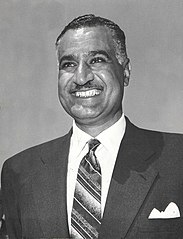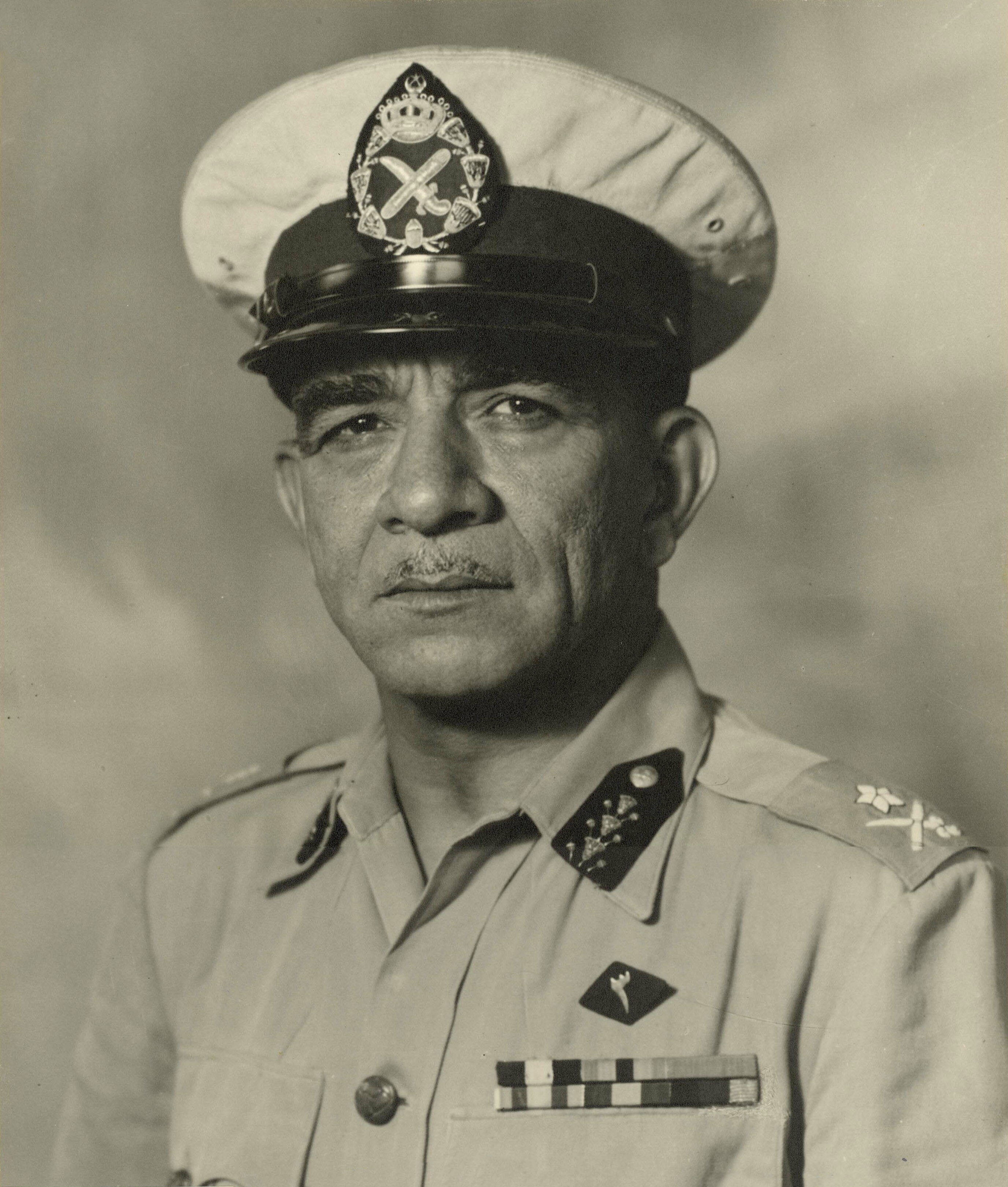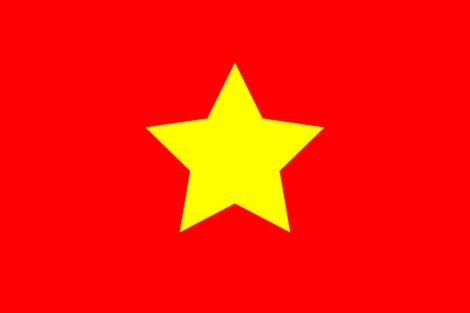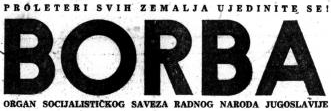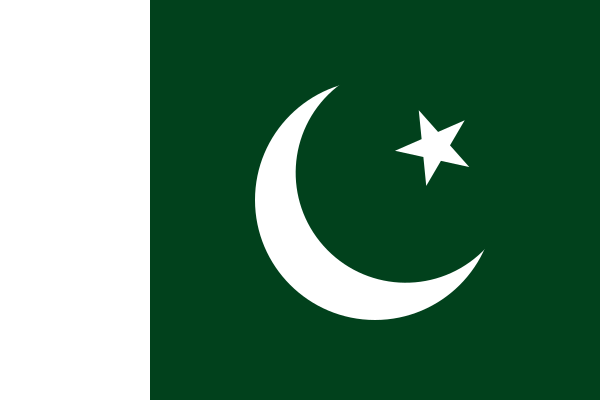CONTENTS
Introduction -------------------------------------------------------------------------------- 373
The Battle for Palestine: First Phase (November 1947 - May 15, 1948) ------- 376
The Battle for Palestine: Second Phase (From May 18, 1948) ------------------- 382
The Political Sphere ----------------------------------------------------------------------- 383
Main Causes -------------------------------------------------------------------------------- 385
The Jewish Danger (Summary) -------------------------------------------------------- 386
The Lesson (Summary) ------------------------------------------------------------------ 387
Arab Unity ---------------------------------------------------------------------------------- 388
The Fertile Crescent ---------------------------------------------------------------------- 390
Modernization ----------------------------------------------------------------------------- 394
The People: Their Rights and Duties ------------------------------------------------- 395
National Education ----------------------------------------------------------------------- 395
The Economic System -------------------------------------------------------------------- 400
Opposition ---------------------------------------------------------------------------------- 403
Conclusion ---------------------------------------------------------------------------------- 404
PART I
INTRODUCTION
The Arabs were faced by a challenge, the first since their liberation from foreign rule; and they did not meet it. A great national disaster has been inflicted upon them, exposing them in turn to further blows and disasters. The challenge and disaster is that of Palestine.
The disaster was not inevitable. During the course of the struggle we had an opportunity to finish with Zionism and its dangers altogether, but we did not take it.
We were greatly shaken and began to question ourselves, asking, how did the disaster happen? Why did matters take this turn? What were our mistakes? Where were the sources of weakness in us, and the gaps through which the enemy entered? How can we repel the great and imminent danger, and recover the beloved and violated fatherland?
This is what we shall now try to analyze.
The prime causers of the disaster were the British. It was they who gave the Jews the Balfour Declaration in I917 with its "national home," and then opened the doors to them. British protection and patronage enabled the Jews to make Palestine their home, and to multiply. Under the protection of British arms Jewish colonies were founded and extended, and Jewish immigration flourished. Under the wings of the British Mandate Jewish terrorism hatched and grew, and was trained by British hands until it became an organized military force. During all this the British prevented us from arming, and shut our eyes to the arming of the Jews, until the time came when they were strong enough to stand on their own feet. Then the British withdrew and announced their neutrality.
Thus the British were the prime causers of the disaster, and on them lies its responsibility. They were assisted by the Americans and the Russians. So much is clear. At all events, we found ourselves face to face with the Jews, and entered into battle with them to decide the future; and in spite of what the British, the Americans, and the Russians had done, it was still within our power to win the fight.
There were two phases to the battle of Palestine. In the first phase the burden of defense was thrown on the shoulders of the Palestinians; in the second, it was taken up by the Arab armies. The Arabs failed to defend Palestine in either phase.
In the first phase the fundamental source of our weakness was that we were unprepared even though not taken by surprise, while the Jews were fully prepared; that we proceeded along the lines of previous revolutions, while the Jews proceeded along the lines of total war; that we worked on a local basis, without unity, without totality, without a general command, our defense disjointed and our affairs disordered, every town fighting on its own and only those in areas adjacent to the Jews entering the battle at all, while the Jews conducted the war with a unified organization, a unified command, and total conscription. Our arms were poor and deficient; the arms of the Jews were excellent and powerful. It was obvious that our aims in the battle were diverse; the aim of the Jews was solely to win it.
These same weaknesses were the source of weakness in our defense in the second phase, that of the Arab armies: disunity, lack of a unified command, improvisation, diversity of plans, and on top of all a slackness and lack of seriousness in winning the war.
Just as we failed in the military sphere, so we failed in the political. Our actions were improvised, our conduct of affairs a chain of enormous mistakes: we had no clear objective and no fixed policy. The natural result of all this was disaster and the loss of Palestine.
These weaknesses were a reflection of the state of the Arab nation and of the existing regimes: a disjointed political order based on dismemberment was reflected in its ranks in battle, as was its slackness. Further, its affairs were in the hands of inefficient governments, and the nation itself was still weak in consciousness and maturity.
The loss of Palestine was a great disaster with far-reaching results for the very existence of the Arab nation. If the Arabs hasten to face the danger before it overwhelms them, there is still time and opportunity. But if they do not, these beginnings will lead to their inevitable conclusions.
The first remedy lies in unity, so that we may become again a strong, cohesive body politic. Fortunately this unity has been the principal aim of our national movement from its inception, just as historically it was the beginning and basis of our existence. Nevertheless, there are obstacles in the way of complete unity at the present time. The field must be narrowed so that it may be nearer actual realization. Here the Fertile Crescent presents great possibilities. Let us then be convinced of regional unity which will bring together the countries of this Crescent, and can be a pattern for general unity, while the door remains open for those other Arab countries which may wish to enter.
But unity is not enough. The inefficiency of the present regimes is also responsible for the disaster. Thus along with unity must go a modernization of government, assuring reforms in organization and progress in aims, and embracing both internal and external policies.
But even all this is not enough without solicitude for the people, for their revival and endowment with the primary elements of power, so that their strength may be transferred to the state. The people must participate in the direction and supervision of their own affairs; they must be given all their rights just as duties are demanded of them. The first and most sacred of their rights is freedom in all its forms. Then come real equality, security of work and social security, and the spread of social services. The people's first duty is to know their rights, to believe in them, and to act by them.
There must be a strong universal system of education with the object of creating a new, powerful, conscious generation capable of defending the Arab homeland and of recovering its self-respect. There must also be a complete program for the exploitation of Arab sources of wealth, so that a powerful defensive system may be created to preserve the country, to raise its standard of living, and to revive its people.
These are the matters of the hour in these difficult circumstances. The future history of the Arabs will be determined for a long time by the way we deal with them and the results we achieve.
THE BATTLE OF PALESTINE: FIRST PHASE
(November I 947 - May 15, I 948)
In the year 1920 a conversation took place between a Frenchman resident in Palestine and a Jew from one of the colonies. The Jew said, "We have two enemies in Palestine - malaria and the Arabs. The cure for malaria is quinine; as for the Arabs, their cure is this," and he pointed to the rifle he was carrying. From that time on, the Jews collected arms and prepared for the battle. In I922 a large shipment of arms sent to the Jews was discovered in Haifa, and in I933 a larger shipment was found being smuggled to them at the port of Jaffa in a barrel of cement. No doubt the smuggling of arms proceeded continuously between these two dates.
The first military demonstration made by the Jews was when Colonel Jabotinsky led demobilized Jews in an attack on the Arabs during the uprising in Jerusalem on April 4, I920. It was Jabotinsky who later founded the Revisionist Zionist Party, which represents fanatical Zionism, or to be more precise, frank and open Zionism, and from which sprang the military organization, Irgun Zvei Leumi. Jabotinsky freely admitted the wide aims of Zionism and the necessity of relying for their realization upon force, and upon the creation of Jewish military unity for that purpose.
From the beginning, the Jews began training and organizing on a military basis under the guise of sporting organizations. At the time of the Arab revolt of I936-39, the Jews came out into the open, and the British Mandatory Government took charge of training them at the hands of British officers. This was the beginning of a new phase in the existence of Haganah, or the Jewish "defense force." When World War II broke out, the Jews volunteered in the British Army, and were encouraged to do so by their organizations for political, military, and economic reasons, but primarily to give their youth military training on a wide scale.
The Jews profited from every occasion in the war to arm extensively. They smuggled in ships loaded with arms from Tobruk. Through devious means they acquired another large quantity of arms from British military camps in Palestine. They bought further arms from traders who used to smuggle them in from the western desert and British military camps in Egypt. All this was disclosed by various incidents brought before military tribunals. They also founded light arms factories. At the beginning of the war the two military organizations, the Stern Gang and Irgun Zvei Leumi, emerged as national military organizations; in I943 they began to conduct terroristic activities against the Mandatory Government.
The Arabs saw all this, feared its results, and felt the necessity of doing the same. But there arose no genuine movement among them to arm and train. They had recently emerged from the revolt of I936-39, during which the British had treated them with the greatest severity. Military tribunals had sentenced to death anyone with whom or near whose houses were found arms and ammunition, even if it were only a bullet; and the British had collected whatever arms remained with the Arabs after the revolt. Moreover, emergency laws and military tribunals were still functioning because of the war. As a result of the attitude of the British toward them and because of their own feelings, the Arabs abstained from volunteering in the British Army.
In the light of all this, it was obvious that any movement for training and arming would have had to be conducted outside of Palestine in the neighboring Arab countries; but this also did not come about. There was an attempt, but it did not succeed because of the lack of unity and cohesion.
So the struggle began, and the Arabs were totally unprepared for it, while the Jews had made great progress in their preparations: they had a goal, and were getting ready to reach it. Nevertheless, the initiative was with the Arabs, who thought that victory would come with shouting, and that actual fighting would put an end to hesitation and bring forth help and materials. But in matters on which important results depend, and particularly in those which decide the destinies of peoples and countries, it is impossible to rely on the inspiration of the moment, or on the course of events.
When the struggle began the news agencies reported a statement made by a British soldier friendly to the Arabs, advising them to prepare on a large scale, and quoting an English proverb which says, "If your enemy be a mouse prepare as though he be a lion." We ignored the advice, but the Jews took it.
The procedure of the Jews in the struggle was based upon total warfare: universal conscription, an expert military command, a unified military authority, widescale military training, complete modern armament, heavy mechanical equipment, expert and strong defenses, and complete integration of the various departments - in general, utilization of all their power and resources for the war effort.
We, on the other hand, proceeded on a narrow limited basis: we had no clear idea of total warfare, but were dominated by the ideas and methods of previous revolts. These had been, in the first instance, popular mass movements of general excitement and enthusiasm. Later there had developed revolutionary groups or bands, but the organization of these groups had been primitive: they had depended for their existence on the personality, strength, and influence of their leaders. For the most part, military elements had had no share in them. Their weapons had been light and old, and every unit had acted independently of the others. When the struggle began, these groups were formed again with the same materials and elements, on the same bases and with the same methods: no general support, no regular soldiers, no unity, no totality, no training, no defense, no good arms.
No doubt our old methods were good in their time, but by now the power of the Jews had increased; their military organization had grown; they had trained forces, effective weapons, a highly technical command. The phase of popular revolts and primitive bands had ended, and only a proper army could be effective. The first spark of the struggle flew at the end of November 1947, following the recommendation of the United Nations for partition; it was in Jaffa, and the hand behind it was generally thought to have been British. The atmosphere had been prepared by the declaration of a three days' general strike.
Was it better to accept the struggle then and to go ahead with it, or should we have paused and perfected our preparations? Did the political situation really demand immediate hostilities before we were ready? However that may be, the fact was that the battle went on, and we proceeded to the bitter and painful end.
As the struggle commenced, we began to understand our deficiencies. Little by little our forces began to grow; here and there we got the better of the Jews in preliminary patrols. Some people imagined that victory was within our grasp, and that the Jews had lost the struggle and their cause. But a basic deficiency in our military set-up continued to create a wide breach in our ranks which remained open until the enemy entered through: this was the absence of a commander-in-chief in the field directing affairs through a unified administration. Instead, a very strange way of conducting war prevailed: in spite of the fact that the struggle was one, the field one, and that we were one small entity in a small country, the theater of operations was split up and the direction of the struggle conducted on a local and disjointed basis.
The Jews were better organized than we. They had a common military command, their forces were co-ordinated, their fronts connected, and their war one. They took full advantage of our disunity and the anarchy in our military set-up. When the time was opportune, they collected all their forces and directed them to one point chosen by them, and dealt us heavy concentrated blows; the victims bore the full brunt of the blow alone, without receiving help or any attempt to lighten it, until he weakened under the impact and fell. Other places watched what was happening next to them and waited their turn, and were unable to do anything because of their preoccupation with themselves, the lack of co-operation, and of a common command.
Thus the country fell, town after town, village after village, position after position, as a result of its fragmentation and lack of unity. How much we lost on every side through this disunity!
This was not all. In addition to its local, disjointed character, the war in Palestine involved only part of the country, not all of it. The brunt was borne by those adjacent to the Jews, while those who were distant remained distant, unless the war approached them; they followed its news and developments with concern, but as though they were not from Palestine, or as though the problem did not concern them, or the result affect them. Thus the war failed to achieve the character of totality.
At the same time the Jews mobilized not only all their young men, but also all their girls in every place and colony, no matter how far from Arab neighborhoods, or secure in the heart of Jewish areas. They conscripted even the newly-arrived immigrants. Theirs was general mobilization and complete military organization. When the struggle began, the Arab League did attempt to remedy the military deficiencies in Palestine by forming a military committee upon which it threw the brunt of the war. The committee hastily formed a small military force, called the "Army of Liberation," which it wanted to constitute as a striking unit, while the burden of defense was left to local forces. But because of its smallness, it was neither able to act seriously in attack, nor even to serve usefully in defense.
In every movement, the aims desired and the methods to achieve them must be defined. What were our aims in the struggle, in the face of the great danger? The aim to which all forces should have been employed and all efforts exerted was the defeat of the enemy and the winning of the battle - and nothing else. But this was not the case; eyes were turned from the true aims to others. Every step in planning the war was mixed with the desire to safeguard a special interest. The necessities of war were neglected or delegated to a second place, and special considerations relating to private aims took priority.
Thus we proceeded in the battle of Palestine - the struggle for our existence, the battle for life or death - in the first phase, between November I947 and the middle of May 1948, which ended with the evacuation and the incredible collapse. We were scattered far and wide, our homes, our land, everything lost.
Out of justice to the efforts of the Arabs of Palestine, mention must be made of their noteworthy qualities. In spite of everything, the Arabs made exemplary stands: what happened at Selma, Abu Kebir, Jerusalem, Qastel, Beit Safafa, Kafr Saba, Bab al-Wad, Ramleh, Tantoura, Ajzem, Jeba, Tireh, and other places was worthy of the Arabs' character and proof of their essential quality. If ultimately the Palestinians evacuated their country, it was not out of cowardice, but because they had lost all confidence in the existing system of defense. They had perceived its weakness, and realized the disequilibrium between their resources and organization, and those of the Jews. Moreover, they had before them the spectre of Deir Yassin, with all its brutality.
They were told that the Arab armies were coming, that the matter would be settled and everything return to normal, and they placed their confidence and hopes in that.
The evacuation and homelessness of the Arabs was planned and intended by the Jews. When Menahem Beigin, the leader of the Irgun Zvei Leumi, was visiting New York following the assassination of Count Bernadotte, he made the following statement: "In the month preceding the end of the Mandate, the Jewish Agency decided to undertake a difficult mission as a prelude to taking over the Arab cities before the evacuation of British forces and the dispersal of their Arab population. The Jewish Agency came to an agreement with us that we should execute these arrangements, while they would repudiate everything we did and pretend that we were dissident elements, as they used to do when we fought the British. So we struck hard and put terror into the hearts of the Arabs. Thus we accomplished the expulsion of the Arab population from the areas assigned to the Jewish state."
THE BATTLE OF PALESTINE: SECOND PHASE
(From May 18, 1948)
The Arabs of Palestine left their homes, were scattered, and lost everything. But there remained one solid hope: the Arab armies were on the eve of their entry into Palestine to save the country and return things to their normal course, punish the aggressor, and throw oppressive Zionism with its dreams and its dangers into the sea. On May 14, I948, crowds of Arabs stood by the roads leading to the frontiers of Palestine, enthusiastically welcoming the advancing armies. Days and weeks passed, sufficient to accomplish the sacred mission, but the Arab armies did not save the country. They did nothing but let slip from their hands Acre, Sarafand, Lydda, Ramleh, Nazareth, most of the south and the rest of the north. Then hope fled.
The loopholes through which the enemy entered in the first phase, while we were fighting as a people, were the same as those weakening our ranks and forces in the second phase, while we were fighting as states and regular armies. Disunity in our aims, improvisation, lack of preparation - in short, military deficiency. On top of all this was added lethargy, absence of plan, neglect of local strength, and lack of seriousness. In this phase also, our forces were disunited in the face of the enemy, our fronts independent of each other, our war local. Our armies had no unified command. It is true that they agreed upon a high command, but it remained nominal.
As a result, the Arab armies were unable to collect their forces and aim them at the heart of the enemy in a powerful, decisive blow. On the contrary, the enemy again exploited the disunity and lethargy in our ranks, gathered all its forces, aimed and struck at our fronts and at our armies, one after the other, with concentrated blows. We received them individually; no one moved when the other was being attacked, nor returned the blows. This happened again and again. The Arab governments had committed themselves to war beforehand, but when it came they found themselves unprepared. We do not know whether this was because they did not take the enemy, or their task, or both, seriously, each one relying on the other without assuming responsibility themselves, or whether it was born only of carelessness and their habit of improvising.
In general, lack of seriousness in the war, failure to understand its far-reaching results, and absence of appreciation for the great responsibility which was on them were obvious during the battle, whether it was at the front, or behind the lines. At the front, this was clear from what has preceded - in the failure of the armies to conduct any of the serious military operations for which they had come, and in the extent of their losses. Behind the lines, the waging of war demanded that preparations should be carried on with great energy, and that all the power of the nation and its resources be directed to the war. But nothing of this happened, and ordinary life went on as it always had in a natural, unperturbed way.
This biting comment we take from the newspapers, quoting the UN observers and the Red Cross officials, who said that when they were in Tel Aviv or Haifa they felt a tension which they did not feel when they were in the Arab capitals. In the former, there was an atmosphere of war everywhere - rationing, abstention from comfort and amusement, and the direction of everything to war; in the latter, an atmosphere of pleasure and indulgence in all the ways of comfort and plenty and blissful calm. We entered the war and slept; but the enemy did not taste of sleep.
THE POLITICAL SPHERE
All this happened in the military sphere of the battle of Palestine. In the political sphere, our proceedings were one chain of great mistakes. Improvisation and a failure to specify our aims were characteristic of all our political actions. We entered the struggle with no clear purpose, with no specific plan, and we excelled at nothing except our negative stand. We had powerful winning cards in our hands, but we did not know how to play them to our advantage. In international politics there were two big opposing camps, disagreeing more and more in both small and major matters. This situation provided us with a means to be effective and victorious, but we did not succeed in exploiting it or in gaining either side. On the contrary, both sides agreed at our expense - the one matter on which they were able to agree - and the miracle was complete.
But no doubt the biggest political failure we recorded was our inability to create some kind of real unity among ourselves in the face of a united enemy, at a most critical moment, in an historical and decisive struggle, with disaster facing us.
A tremendous mistake was to accept the truce on June 10, 1948, after twenty-five days of the struggle had passed and before the Arab armies had arrived at a decisive result. It is true that the Security Council, and the British and Americans in particular, interfered and put pressure on the Arab states to stop fighting; and that the British cut off the supply of arms, contrary to treaties between them and the Arab states, and then came forward with the suggestion of the appointment of an "International Mediator" as an apostle of peace, and proposed the four-week truce to save the weak position of the Jews. But all this does not excuse the mistakes which led to failure and disaster. This pressure had been gauged and expected beforehand. Everyone saw the necessity of finishing operations as quickly as possible, before other states intervened, and we were given the opportunity. But lethargy and lack of effort in striking the quick, decisive blow set in. The Arab states could have done one of two things: either collect themselves and continue the war without listening to the UN and the Security Council, as the Jews did later on, until Palestine was saved; or end the war on conditions clearly settling the issue over which they were fighting. But the matter ended with individual negotiations made by the Arab governments separately, one after the other with the Jews, to decide on a lasting truce. These governments did not know either how to enter the battle or how to get out of it.
Thus we lost the battle and we lost Palestine, and with it we lost the self-respect of the Arab nation; until the European press referred to the Arab states as "the seven zeros."
MAIN CAUSES
How did matters take this turn? There are three aspects to the answer: lack of unity and dissension among the Arabs; the existing regimes in the Arab countries; and the state of the Arab peoples. The disunity at the front was a reflection of the disunity within; the weakness of the military and political preparations was the result of a general governmental weakness of preparation; the shortcomings and lethargy of the governments was the result of the weakness of popular control over them; and the weakness of this popular control was the result of a general weakness in the Arab peoples.
In the face of the enemy the Arabs were not a state, but petty states; groups, not a nation; each fearing and anxiously watching the other and intriguing against it. What concerned them most and guided their policy was not to win the war and save Palestine from the enemy, but what would happen after the struggle, who would be predominant in Palestine, or annex it to themselves, and how they could achieve their own ambitions. Their announced aim was the salvation of Palestine, and they said that afterward its destiny should be left to its people. This was said with the tongue only. In their hearts all wished it for themselves; and most of them were hurrying to prevent their neighbors from being predominant, even though nothing remained except the offal and bones.
The structure of the Arab governments was old-fashioned and sterile. The regimes did not even understand the situation, or the importance and danger of the hour, or the course of events. They did nothing positive in accordance with the exigencies of the situation, neither politically, legally, administratively, nor socially. Their political and military inefficiency has already been noted. As for their administrative inefficiency, the Arab states occupied part of Palestine where there was an administrative vacuum after the evacuation of the British. However, the elements of administration were still there: officials, offices, and records. It was the first duty of the Arab governments to continue to administer and not to hold up common interests. All this was quite easy, and of great value for the course of the war. Nevertheless, offices and services were suspended, an indication of incompetence and lack of understanding of the value of local administration.
In the social sphere, the incompetence of the Arab governments has revealed itself in the matter of the refugees. The matter is most urgent. In the eyes of the outside world it is a test of the value and the preparedness of the Arabs. The essence of the matter is not charity, but organization and assistance and the opening up of new opportunities. It is shameful that the Arab governments should prevent the Arab refugees from working in their countries and shut the doors in their faces and imprison them in camps. The matter needs adequate effort, a will to work, sincerity, and good organization.
So the blow came through the lethargy and rivalry of the Arab states, the incompetence of their governments, and the unawareness of their peoples. These are our faults, the weaknesses in our ranks, the loophole through which the enemy entered and brought on us shame and loss. So long as these weaknesses remain, the Arabs will remain groups and states ruled by inefficient governments through antiquated regimes; the people will remain feeble, careless, and far from attaining control over their own affairs; and Palestine will not be the last or the most serious disaster to afflict them.
Nevertheless, Palestine and the self-respect of the Arabs must be recovered. Without Palestine there is no life for them. This our ancestors understood truly as of old. Their understanding was better than ours. When Europe attacked and took Palestine from them., they were willing to die for it and continued to struggle until they recovered it. Thus it is today. This is the first phase of a long war. But so long as the conditions of weakness persist, the recovery of Palestine will be a futile hope.
THE JEWISH DANGER
(Summary)
With the establishment of a Jewish foothold and base, the Arabs are faced with a new danger. The ambitions of the Jews are not limited to Palestine alone, but embrace other parts of the Arab world. In a message to his people last year, Mr. Ben-Gurion said: "Prepare to achieve our final goal in the construction of the Jewish state, the gathering-in of the Jews of the world, and the fulfillment of scriptural promises." The Zionist program dates back to the days of Herzl, and it is based on the colonization of Palestine and the revival of the Jewish kingdom as it was in its golden age. Palestine will then become the base for exploiting all the East and for extending the economic interests of the Jews. In their definition, Palestine includes present-day Palestine, Transjordan, and large portions of Syria, Lebanon, and Egypt. They dream of "a greater Jewish state between the Nile and the Euphrates."
This program they are implementing step by step. The next step will be an attempt to take all of Palestine, and then they will proceed according to circumstances - circumstances which they themselves will attempt to create. To this they will bring all their power, influence, wealth, and abilities.
This is the danger which faces the Arabs, and which obliges them to change their way of life in order to be able to meet the new situation.
THE LESSON
(Summary)
Although the Arabs have seen and heard something of the disaster which has befallen their brothers in Palestine, its full extent goes far beyond anything they have seen or heard or imagined.
Hundreds of thousands of the Arabs of Palestine have left their houses and homes, suffered the trials and terrors of flight, died by the wayside, lived in misery and destitution, naked, unprotected, children separated from their parents, robbed, raped, and reduced to the most miserable straits.
Had the Palestinians been able to foresee their fate, they would have willingly given up all they possessed in order to preserve their country and to avoid their exodus and dispersal. Today, Arabs as a whole have been given the opportunity to look into the future, and to profit from this lesson. If they learn this lesson, they must from now organize themselves and prepare to defend their homes and their country. Force can only be repelled by force. But the Arabs will not be strong until they are united, and take the road by which nations become powerful. Time does not wait for us; we must hurry.
The Arabs are still stronger than the Jews if they unite and co-operate. Palestine slipped from their hands very cheaply: it was not defended as one should defend one's home. The Arabs need cohesion, organization, training, so that their potential strength may become real.
The first essential is to end our quarrels about Palestine, and to recover our unity of plan and action. The greatest danger is that we should remain divided and backward, while the enemy grows stronger.































